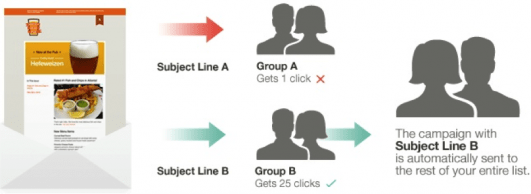While it’s been around since before social media and newer electronic communications tools, using e-mail to send a mass message is still a popular and effective way for a company to keep in touch with audiences and drive traffic to their website. E-mail marketing campaigns, including e-blasts or e-newsletters, can be handled in various ways regarding frequency, type and amount of content, audience segmentation, and more; there’s no “one size fits all” recommendation.
Maximizing the potential of e-mail marketing involves crafting messages that align with your marketing goals AND provide useful information or incentives to recipients, all while avoiding pitfalls that may flag your message as spam.
Harris Web Works provides complete e-mail marketing services to successfully and efficiently reach your audience. We can help you by consulting, developing and/or implementing on a regular basis. E-mail marketing services such as MailChimp, iContact, and Constant Contact provide the backbone for us to implement successful campaigns for our clients. Overall, we can handle the processes listed above and more:
- Set up e-mails so spam filters don’t block them, following established rules of courtesy and ethics for e-mail
- Create custom code and designs to make your emails stand out from the rest, including effective subject lines
- Host your email lists to simplify sending them
- Create unique email content from scratch
- Monitor performance via analytics tools
Components of a Successful E-mail Campaign
When starting or changing an existing e-mail campaign, start by defining goals. Are you aiming to build better relationships with current customers? Appeal to new ones? Share deals or service offerings? Curate useful content related to your business? A combination of the above? Outline appropriate goals, knowing your e-mail campaign is a strategic tool to communicate with those who’ve joined or stayed on your mailing list, indicating they’re interested in hearing from you. As you develop the concept for the e-mail, consider these components:
- Design and branding > successful e-mail marketing includes more that basic text. Colors, designs, images, and more make the e-mail stand out in the crowd. Give your e-blasts/e-newsletters a unique look, strongly branded with your company’s logo and other design elements, so people can easily identify it.
- Name and title > make sure the subject line is clear and compelling. If it’s a genuine e-newsletter, give it a name that aligns with your brand.
- Interesting content >users subscribe to e-mails to get something they can’t get elsewhere and/or they prefer to receive information rather than seek it out. Either way, your e-mails should provide unique and useful content so the user gets value from it, i.e., coupons/offers, industry or product news or information, etc.
- Be enthusiastic and inspire action > your fervor for what you’re providing should come through in the content. This’ll inspire readers to take positive action, such as clicking on links, taking advantage of a sales promotion, sharing/forwarding the message, or contacting you. Make all calls to action clear.
- Review performance >e-blast tools provide detailed analytics showing what days and times work best, what gets the most clicks, and other key measures to help a campaign continually improve over time.
Build Your E-mail Marketing
Once your e-mail campaign has been sent, it’s vital to track performance and make modifications over time. Tracking tools can provide overall and granular statistics to show you which e-mails and what specific content gets the most attention, enabling you to pinpoint and focus on what’s working best. One popular technique to try is A/B split testing. This is a process of sending slightly different versions of the same e-mail to separate groups, then comparing performance, and applying that knowledge to make subsequent mailings more effective.
Image via MailChimp
E-mail auto-responders provide an opportunity to immediately connect with new subscribers. You can automate one or more e-mail messages to be sent to new subscribers, upon sign-up and then as a follow-up at pre-determined intervals. Perhaps the first message is a welcome message with a pertinent question, or maybe there’s a series of tips or promotions you’d like to share. The point is that each new subscriber gets attention right away and then ongoing, with helpful content.

